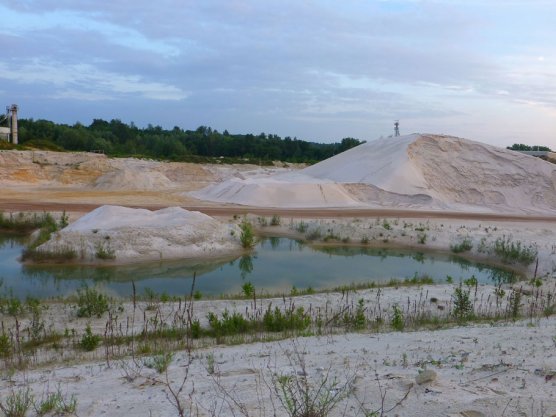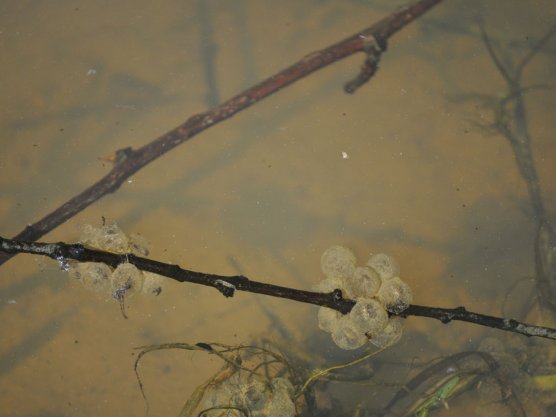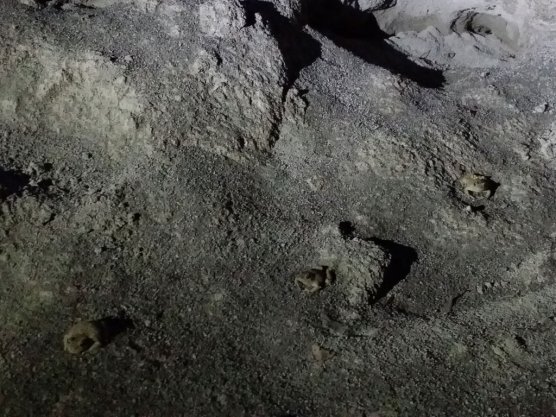
A conservation project for rare toads in the StädteRegion Aachen

The yellow-bellied toad, natterjack toad and common midwife toad
Rare – endangered – worth protecting
The yellow-bellied toad, natterjack toad and common midwife toad are pioneer species
Amphibian species requiring a dynamic habitat with ever new ponds, open terrain and loose, sandy and rocky outcrops or soils, are called pioneer species and their habitat is described as a pioneer habitat. These include the yellow-bellied toad and natterjack toad species of amphibians. Because of their special habitat requirements, they like to colonise areas of domestic raw material extraction such as gravel pits, sand mining areas and quarries. The common midwife toad has similar needs and is therefore often found together with the natterjack toad and the yellow-bellied toad.
Industry in the Aachen CitiesRegion benefits target species
In the Aachen CitiesRegion, too, a large part of the populations of the yellow-bellied toad, natterjack toad and common midwife toad live in habitats that are the result of commercial or industrial activities. These are the pit heaps from coal extraction such as in the nature protection areas of Noppenberg and the Carl Alexander mine dump, a number of active and former limestone quarries in Stolberg, and also mine dumps from ore extraction and metal processing as well as loose rock excavations such as gravel pits and sandpits. Habitats for the target species also resulted from military training operations such as in the FFH protected areas of Münsterbusch, Münsterbachtal and Schlangenberg.
Disturbance is vital
Due to the large number and close interconnection of these secondary habitats in the Aachen CitiesRegion, the target species have been able to survive in the project region until today. Nevertheless, because of structural changes in regional industry and the reduction of military training operations in the past decades, there has been a substantial loss of suitable habitats for pioneer species and thus a continuing decline in population sizes here as well.
This is because pioneer species depend on the continuous creation of new bodies of water that are not colonised by predators, and on the maintenance of the open character of their habitats by people, either through use or maintenance measures, particularly since their natural habitats – dynamic river and stream floodplains – have almost disappeared.
If people fail to take action, that would lead to bodies of water disappearing or being taken over by competitors or predators, and that shrubs, bushes and eventually even trees would take over the terrestrial habitat of the amphibians. The temporary bodies of water especially – puddles and ruts – that are important for the natterjack toads and yellow-bellied toads would disappear without use because of the lack of compaction needed.
Thanks to intensive nature conservation efforts (government nature conservation, nature conservation associations, the Biological Station), the decline of the target species in the project region was able to be stopped on the whole, however, numerous occurrences in the meantime have become extinct and most of the occurrences still known are in a conservation status that is bad or inadequate.
Which habitats do pioneer species use?
For the protection of the species, it is important that all sub-habitats, the bodies of water and the terrestrial habitat are suitable for the animals. Suitable places on land for hiding and overwintering are important, as is sufficient opportunity for capturing prey.
Life in water and on land
Almost all amphibians need water to deposit their spawn or larvae. The larvae – called tadpoles for frogs – live until metamorphosis only in water and breathe via gills. With batrachians – which include frogs and toads – the larvae metamorphose into terrestrial creatures that breathe through lungs and spend varying amounts of their time in water. In summer, yellow-bellied toads can frequently be found in puddles and ponds not only at night, but also during the day. Adult natterjack toads go to a body of water only for mating. With the common midwife toad, only the males search for a body of water in order to deposit their larvae. Even the mating of common midwife toads takes place on land.
The terrestrial life of the adults
Adult natterjack toads and common midwife toads live on land. Because of their permeable skin, they need to protect themselves during the daytime from desiccation. They are therefore active primarily at night. They emerge from their hiding places at dusk to forage or to go about the business of reproduction. During the day they hide away in crevices, stay under stones or deadwood, or burrow in sandy/gravelly soil. The common midwife toad prefers sunny embankments, piles of log debris or loose rock deposits very close to its body of water. Yellow-bellied toads also like to spend their days in bodies of water. If these dry out, they retreat to damp hiding places.
The cold-blooded animals spend the winter in frost-proof hiding places. They use the burrows of small mammals, the crevices in piles of boulders, hide away under deadwood, foliage and roots or burrow deep down in sandy soil.
Whatever is right under its nose will be eaten
Frogs and toads feed on all types of small animals. Anything that moves and can be overpowered serves as food. That can be worms, snails, insects or spiders. Tadpoles, on the other hand, feed on algae, dead animals or other dead, organic material.
Further informationen
you find on this website:






